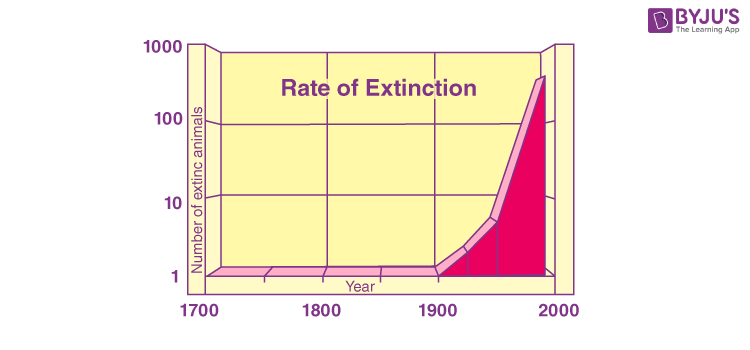What is Holocene Extinction?
The ongoing extinction of the Earth’s flora and fauna due to human activities is termed as holocene extinction. This is the sixth mass extinction since the existence of Earth in 450 million years.
What is mass extinction?
It is an event of loss of more than 75% of the existing species in a very short geological time. The short here refers to millions of years in comparison to the Earth’s age.
The previous five extinctions before the holocene extinction are:
- Ordovician–Silurian extinction
- the Late Devonian extinction,
- the Permian–Triassic extinction event,
- the Triassic–Jurassic extinction event,
- and the Cretaceous–Paleogene extinction event.
Role played by humans for Holocene Extinction
Scientists claim that the previous extinctions were caused due to natural catastrophes like volcano eruption, asteroid collision and depletion of oceanic oxygen, but this ongoing holocene extinction since the past 10000-110000 years is gravely serious and once happened will be irreversible.
The increasing human population is posing a threat to other organisms in the ecosystem in ways such as the overhunting of animals, exploitation to extract wool and leather, urbanisation which is wiping green areas, climate change, pollution and innumerable reasons like this.
It is estimated that 30% of the species living today will be lost in the next forty years. It will be no surprise if the humans themselves are wiped out in this extinction because of their gory activities.
Because holocene extinction is being caused by humans, conservationists are calling it an Anthropocene extinction.


Outcome of Holocene Extinction
- Extinction of any species big or small directly affects the food chain. An example of this can be seen in sea otters. They were the main predators of sea urchins. A rise in the urchins put a pressure on otters and as a result they went extinct in a few years.
- The dodo bird of Mauritius went extinct when rats and pigs started thriving on the island due to human intervention, they ate all the eggs and babies of the bird and hence led to extinction.
- Numerous species like this have gone extinct and are continuing at a rate 100 times larger than the previous extinctions.
Can we do anything to stop Holocene Extinction?
We have very less time to save what is left from the Holocene Extinction. If we start today we might be able to delay the extinction process by a few years but it cannot be totally curbed.
By limiting our hunting activities, reducing pollution and encroachment we can give a try to save our mother Earth and increase the longevity of our life.
Conclusion
This is our mother Earth and it is our responsibility to save it for our future generations. Every step you take affects the ecosystem directly or indirectly, so think of ways to save our environment. Every step counts!
Explore BYJU’S biology to know more about extinction!
Frequently Asked Questions
What are the types of extinction?
There are two types of extinction: Mass Extinction and Background Extinction.
What is background extinction?
Background extinction is an event which happens naturally in the environment, as a part of evolution.
What animals went extinct during the Holocene?
Mammoth, Mountain deer, Armadillo, bison are some of the animals that have gone extinct during the holocene.
Comments